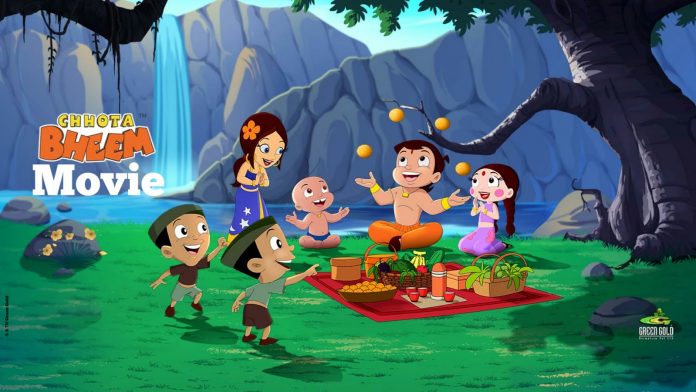By Surendra Bhatia
There Is A Future In Foreign Markets…
If Bollywood displays the will, it can find the way to sell its films globally. If Bollywood films have not as yet invaded foreign markets in any measurable way, it is due largely to inefficient and insufficient efforts rather than the quality of its films. The general standard of cinema may not be high but Bollywood still manages to produce a few films that can stand their own, in their own way, against the best in the world. Films like Lagaan, Taare Zameen Par, Dangal (all Aamir Khan films, incidentally, but these are the ones that spring easily to mind), with strong stories would be accepted anywhere in the world, after effective dubbing or subtitling. The idiom in these films is Bollywood but the message and narratives are universal. Dangal proved a blockbuster in China; there’s no reason why it wouldn’t have scored in every country across the world, if it had been promoted adequately. The same goes for the other films mentioned above, and lots more, really. It’s all a matter of striking the right distribution partnerships and the world would open up to Bollywood.
There’s been a new success story internationally for India’s TV and film product: Chhota Bheem. The Indian TV series for kids, in that sense, has been luckier than most Indian films. A home-made animation series, technically not a patch on even the Tom & Jerry cartoon episodes made five decades back, Chhota Bheem, nevertheless, carved out a niche market for itself as soon as it was launched on Indian television in 2008. Perhaps, the expectations from animation levels were low, or, possibly, it helped that Indian kids could finally watch a cartoon series with which they could identity, but Chhota Bheem quickly seeped into our cultural ethos and became the most successful cartoon character not just in India but also Pakistan and Iran. Fortunately, the producers got into merchandising pretty early in the game and struck amazingly lucrative deals, helping it consolidate its economics. Currently, the Chhota Bheem character has over 300 endorsements across product ranges, making it a highly lucrative advertising star, supposedly worth over Rs. 250 crore!
But it was still an Indian cartoon series, not the best technically, but entertaining and fun to watch. The series made a leap of faith by getting into features and even tried to infiltrate the Chinese market with its latest movie: Chhota Bheem: Kung Fu Dhamaka 3D. Through all this, it was still a local cartoon character, popular in India and the neighbouring countries, catering to kids in the 6-11 age band.
Then the nearly unthinkable happened. Netflix got interested in this Indian cartoon series. As a voracious streaming service, operating online in almost 190 countries, Netflix saw opportunity in the simplistic storylines of Chhota Bheem. Conceived as a strong boy character of about 8-9 years old, the storylines of Chhota Bheem, for television series and later on for its features, were fairly straightforward and uncomplicated as a series for children ought to be. Perhaps, this is what appealed to Netflix or maybe the fact that India is fast becoming culturally the international flavour of the season. It struck a deal with producers of Chhota Bheem to help the character go international. However, Netflix worked out the Chhota Bheem they wanted, which is sufficiently different from the one that has enchanted children in India and the neighbouring countries.
For one, Netflix turned Chhota Bheem from a nine-year-old to a two-year-old, shifting the audience from age group of 6-11 to the pre-school band of 2-4-year-olds. Necessarily, because of the age group, the lead character was deprived of speech so the language barrier was knocked out of the park, making it possible to telecast it all across the globe without having to worry about subtitles or dubbing. Also, since it caters to toddlers, the series was judged (by toddlers, at least) not by its animation quality but by the slapstick nature of action, which suited the Chhota Bheem character just fine. As Bheem, the character’s super-strength provided great scope to get toddlers glued to the idiot box. With all these changes, Chhota Bheem metamorphosed into Mighty Little Bheem, absolutely in sync with globally famous comic-TV-film characters like Superboy and his superhero ilk.
The experiment, as it seemed to have been, has already proved eminently successful. Mighty Little Bheem has become Netflix’s top pre-school title globally within a month of its launch and is now the second-most watched original series in its genre, next only to Boss Baby: Back In Business. Its YouTube trailer has hit 22 million views and still counting. According to reports, Mighty Little Bheem has proved to be particularly popular in Colombia, Argentina, Chile and the US. And its popularity is growing day by day since pre-schoolers have a lot of free time for television viewing. Obviously, the fact that it is non-verbal makes Mighty Little Bheem a lot easier for foreign cultures to accept and digest since language doesn’t feature in it.
In fact, it may be particularly popular in foreign lands because it is an Indian series. Bheem wears a saffron chaddi, or diaper as foreigners may think, and also a tilak on his forehead; the female characters are dressed in saris, adding to the quaintness, and also, most importantly, the series is based in an Indian village. Indian villages may be whatever they are in reality but foreign audiences’ perceptions are based on films like The Jungle Book. The makers of Mighty Little Bheem, very smartly, have spared no efforts to cater to this perception, packing in as many animal characters as they could draw… they have included The Jungle Book staple of mischievous monkeys and benevolent elephants. It may be too early to tell but it is quite likely that Mighty Little Bheem will begin to look a lot more like The Jungle Book in the next few months than the Chhota Bheem Indian audiences are familiar with.
And this is the way it should be. Basically, Netflix and the makers of Chhota Bheem have tailored Bheem into a globally acceptable child character, taking the best of the original and adding and subtracting what they could in the setting to cater to the worldwide popular perception of India and Indians. It is no different from the way the English knocked off the chilly spiciness of Indian chicken liver masala and mauled it into a bland English version, taking it so many notches higher that today it is England’s national dish.
Mighty Little Bheem will surely become the third best known Indian TV/film character in the outside world, after Mowgli and Apu (of Simpsons). It has all the ingredients required to make it hugely popular globally. It has evolved into a sure-shot recipe. Besides, it is catering to an audience (of 2- to 4-year-olds) which won’t have much to compare it with, or worry that India is a third world country.
It required a surgical makeover to transform the Indian children’s favourite, Chhota Bheem, into a pre-schooler Mighty Little Bheem. In that sense, the latter version is an entirely new creation. Unfortunately, that isn’t possible with Bollywood films. However, if producers and directors are smart, it shouldn’t be difficult to re-edit certain Indian films, eliminate the songs and reduce the running time to 90 minutes, to make more acceptable versions for foreign markets. This might be more possible to accomplish in Taare Zameen Par, for instance, than Lagaan. In fact, if costs are not prohibitive, it would be a good idea to keep in mind the possibility of creating a version for the foreign markets before going into production for the Hindi version. It may sound impractical for many films but some like Taare Zameen Par would lend easily to an international version.
There’s yet another factor that should be taken into consideration in the case of both, Dangal (India’s most successful film in the overseas market) and Mighty Little Bheem, and that is, the involvement of international distributors. Mighty Little Bheem has been taken abroad by Netflix, which has acted as midwife; Dangal made it big in China because Disney undertook the distribution. Obviously, Indian distributors do not have the capacity to take Bollywood films abroad except to niche NRI markets. It needs the active and financial participation of foreign companies which have the domain expertise. If more Bollywood films would seek out foreign distributors and accept re-editing ideas from them, the possibility of scoring in foreign markets would increase.
The best, of course, would be to create franchise characters like Chhota Bheem that would get foreign studios more easily interested. For the moment, however, it is sufficient that Chhota Bheem, or Mighty Little Bheem, is conquering foreign markets… if it succeeds hugely, how long before a Bollywood film does the same?
Kareena Kapoor: She’s One Of The Best!
In case it has escaped anybody’s attention, Kareena Kapoor is the best! Fortunately for Hollywood heroines, she has not ventured out of Bollywood, otherwise the various Jennys and Jessicas there would be green with envy and possibly get a lot less work than they do now. Of all the heroines Bollywood has seen in the last decade or so, no one really comes close to Kareena’s confidence, beauty, glamour, lineage and acting skills, though there may be some who are better than her in one or some of the above. Kareena doesn’t go in much for soft skills but call upon her to essay a role and get into a lime green bikini and set YouTube ablaze, she’s the girl for you.
There’s this silly tendency in Bollywood to talk about acting skills of actresses that are not naturally beautiful. If a heroine is plain-looking, then she is considered a better actress than the one who sets the screen on fire with her stunning looks, even if the latter may be a superb actress (like Kareena is), lacking nothing in the acting department. Nobody seems to understand that the inability to appear extremely glamorous is a huge handicap akin to poor acting skills. Kareena, thank God, is absolutely unique: she’s so glamorous that an experienced producer like Aditya Chopra thought, he could balance a boring film by displaying her zero figure in a lime green bikini. The film still didn’t sell, which is proof actually of how bad Tashan really was.
That she is a fabulous actress is borne out by the fact that Kareena is never at sea in any of her roles. She’s always convincing in whatever she plays, something that she has in common with, maybe, Madhubala. She can’t be blamed for the fact that stories about plain-looking girls can’t be offered to her because her beauty is impossible to conceal on screen. So, she does largely glamorous roles.
That’s why it is so astonishing that people are cribbing about Kareena Kapoor being paid untold fortunes for making her debut as a judge on a dance reality programme. Why would she do it for anything less? Isn’t she one of the best to appear on a TV show? After all, she’s not a retired actress or one on the downslide, seeking to revive her career. Kareena is still getting the best of films as actress. It’s not as if her fans have slipped away from her just because she got married and has had a baby; in fact, they dare not try to slip away… one deadly look from Kareena and they would turn to molten wax, exactly the way so many of her producers do when she turns her eye on them. And this thing about getting a small fortune – it’s not being given to her in charity; she’s earned it by dedicatedly churning out variations in roles purely glamorous. Looking back at her career, could any other actress have brought in so much variety of glamour in Bollywood heroine roles? Very few could. Kareena is being paid handsomely because she is almost unique. Bollywood and now, possibly, Indian television also pays a premium to uniqueness, right?































